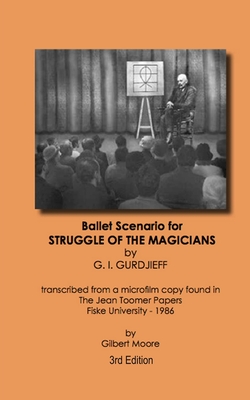From the first edition: The time, early 1915, Europe engulfed in the First World War, Russia in a terrorizing October Revolution. The place, a newspaper office in St. Petersburg, a young editor by the name of Peter Ouspensky is reading The Voice of Moscow. Through spectacles his eyes fall on an advertisement, the headline reads: "Struggle of the Magicians". The text below this describes an anonymous "Hindu" who has written a ballet set in India and giving an "accurate picture of Oriental magic" there -- fakirs, miracles, sacred dances, hypnosis -- all popular fads of the time in Europe and Russia...The "Hindu" turned out to be none other than the Armenian-Greek philosopher-scientist Georg Gurdjieff, and the ballet he wrote, his point of entry into the West, The Struggle of the Magicians. Choreographed and staged for the first time more than a century ago, this ballet became a magnet attracting thousands of spiritually disillusioned men and women to performances in Europe and the U.S., and then it simply vanished from sight after WW II.From the 2nd edition: "The story -- recorded originally by Peter Ouspensky -- has carried over to the second edition which remains unchanged except for proofreading corrections and the addition of Appendix A. The original Introduction is still there, connecting Gurdjieff to Jean Toomer, an African American Harlem Renaissance writer and author of Cane, and documenting the editors discovery of The Struggle in the Rare Books Room of Fisk University, Toomer's Alma Mater. And last, but not least, the magical, transformative ballet scenario itself, authored by Gurdjieff, is still there. the 2nd edition included Ouspensky's remarkable remembrances of his nights with Gurdjieff transcribing lyrics for the Ballet that were never sung. So why a 3rd edition? Answer: The de Hartmann transcriptions of Gurdjieff's musical compositions and the Movements. Here we close the circle opened one hundred years ago this year (2019) in a Moscow newspaper office with G. the musical composer and G. the choreographer, whom G. the esoteric teacher carefully and humbly hid from us all. Only the effects of his genius we ever saw, not the Source.










